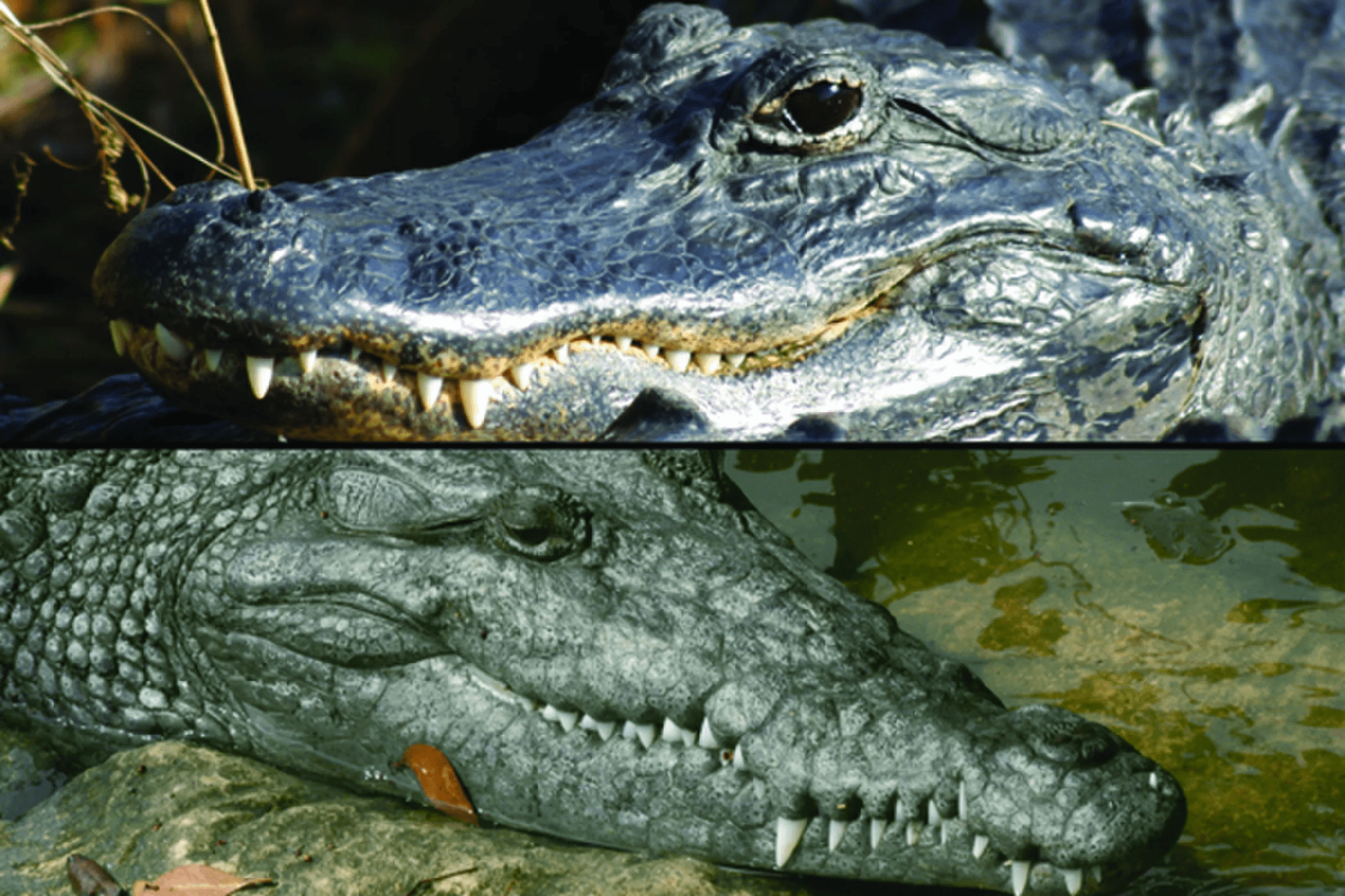ALLIGATORS VS. CROCODILES

Stuff you should know about Alligators and Crocodiles.
by Emma Reid
On our tours, people ask A LOT of questions about alligators, but the most common question by far is, “What is the difference between an alligator and a crocodile?”
It is important to know that we will not see any crocodiles on our tour, only American Alligators (Alligator mississippiensis). The two reptile groups are closely related, so they do look physically similar, but there are some major differences one should know.
Physically, you can differentiate them by the shape of their snout. The crocodiles have more of a V-shaped snout while alligators have a U-shaped snout. A crocodile’s top and bottom jaws are fairly equal, whereas an alligator has a bit of an “overbite” with the top jaw being slightly larger. Crocodiles have a pronounced fourth tooth in the lower jaw that lays on the outside of the top jaw when closed. Crocodiles also possess lingual salt glands (found on their tongues) that help excrete excess salt from their bodies. Crocodiles also tend to be longer than they alligator full grown. An adult crocodile can grow up to roughly 19 feet long, whereas for alligators, the maximum length is around 14 feet. Crocodile hides tend to be more of a light tan or olive color, whereas alligators are usually a dark blackish grey. (The exact shade of an alligator skin depends on the quality of the water it swims in. Tannic acid from overhanging trees will make them darker, algae will make them greener).
Crocs and gators also tend to live in different environments; alligators prefer freshwater marshes and lakes while crocodiles tend to live in saltwater environments. There are more species of crocodiles around the world, but the only kind you are likely to find in the United States are American Crocodiles (Crocodylus acutus), and they could be found at the northern end of their range in south Florida.
Alligators, while definitely dangerous, are relatively timid compared to crocodiles. An alligator will generally try to escape if approached by humans, usually heading for the nearest water. The only time that wild alligators will attack is if they are unexpectedly disturbed, provoked, or defending their young. Alligators are instinctively afraid of humans but can lose some of that fear with regular contact. Except in controlled conditions, feeding them is almost always a bad idea as they will lose some of their fear and see humans as a source of food. They can also mistake small children and pet dogs for prey. Crocodiles, on the other hand, are much more bad-tempered and far more likely to attack humans, even unprovoked. Australian saltwater crocodiles are generally considered the most dangerous in the world, followed by Nile crocodiles. American crocodiles, on the other hand, are one of the more timid types that you will find and rarely attack humans. In the US, you are more likely to be attacked by an alligator than a crocodile, although attacks by either are very rare. The average annual fatality rate for death by alligator in the US is actually only 0.3. That means on average, one person dies every three years. That’s a very small figure when you consider how many people and alligators there are in southeastern US. The truth is that you are more likely to be killed by a dog, a bee or wasp sting, spider bite, rattlesnake, mountain lion, or shark.

